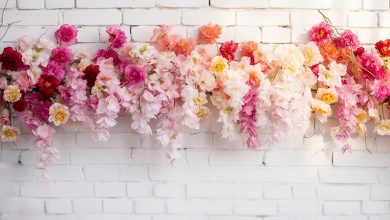How to Hang Flower Baskets: A Step-by-Step Guide

Hanging flower baskets can add a delightful touch of color and charm to your home or garden. Whether you’re a seasoned gardener or just starting out, knowing how to hang flower baskets properly ensures your plants thrive and your space looks beautiful. This step-by-step guide will take you through everything you need to know to create stunning displays that will be the envy of your neighbors.
Choosing the Right Spot for Hanging Flower Baskets
Finding the ideal location for your hanging flower baskets is crucial for their health and appearance. Placing them in the right spot ensures they receive adequate sunlight, are easily accessible for care, and enhance the overall aesthetic of your outdoor space.

When considering how to hang flower baskets, follow these tips to choose the perfect spot:
- Assess Sunlight and Shade: Observe the area throughout the day to determine how much sunlight it receives. Most flowering plants require at least 6 hours of sunlight daily to thrive. Choose plants that match the light conditions of your chosen spot—full sun for sun-loving plants like geraniums or petunias, and shade for impatiens or ferns.
- Consider Accessibility: Ensure the area where you plan to hang your flower baskets is easily reachable for watering, deadheading, and general maintenance. Hanging baskets can dry out quickly, so easy access is essential for regular care.
- Evaluate Weight Capacity: Before installing hooks or brackets, assess the weight capacity of the support structure. Wet soil and mature plants can become heavy, so it’s important to use sturdy hooks or brackets that can safely hold the weight of your filled flower baskets.
Choosing a spot that meets these criteria ensures your hanging flower baskets not only survive but thrive throughout the growing season. Proper placement based on sunlight exposure, accessibility, and structural support sets the foundation for healthy, vibrant plants that beautify your outdoor living space.
Read More: The Best Hanging Flower Basket Ideas
Remember, the success of how to hang flower baskets starts with selecting the right location. Take the time to evaluate these factors before proceeding with planting and hanging your baskets to enjoy a season filled with blooming colors and lush greenery.
Gathering Your Materials
Before you begin the exciting process of how to hang flower baskets, it’s essential to gather all the necessary materials. Having everything ready ensures a smooth and enjoyable planting experience, leading to beautiful hanging displays that will brighten up your surroundings.
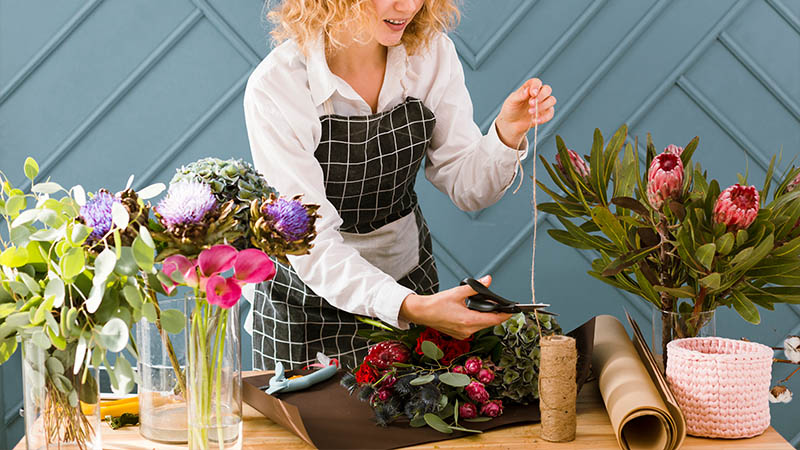
Here are the essential materials you’ll need:
- Flower Baskets or Containers: Choose hanging baskets with adequate drainage holes to prevent waterlogging and promote healthy root growth. Alternatively, containers specifically designed for hanging are also suitable.
- Potting Soil: Select high-quality potting soil formulated for container plants. The soil should be well-draining yet moisture-retentive to support the needs of your plants.
- Flowering Plants or Seeds: Decide on the flowers or plants you want to showcase in your hanging baskets. Consider colors, textures, and growth habits that complement each other and the environment where you plan to hang them.
- Watering Can or Hose: Ensure you have a reliable watering can or hose nearby for regular watering. Hanging baskets often require more frequent watering compared to plants in the ground.
- Fertilizer (optional): Depending on your plants’ needs and the quality of your soil, you may choose to include a balanced fertilizer. This can help promote healthy growth and vibrant blooms throughout the season.
Having these materials on hand before you begin how to hang flower baskets ensures you can plant and hang your baskets efficiently and effectively. Prepare your workspace with all the necessary tools and materials, and enjoy creating stunning floral displays that bring joy and beauty to your outdoor spaces.
Planting Your Flower Baskets
Now that you’ve gathered all your materials, it’s time to dive into how to hang flower baskets by planting them with your chosen flowers or plants. Proper planting techniques ensure your baskets thrive and display vibrant colors throughout the season, enhancing your outdoor living space.
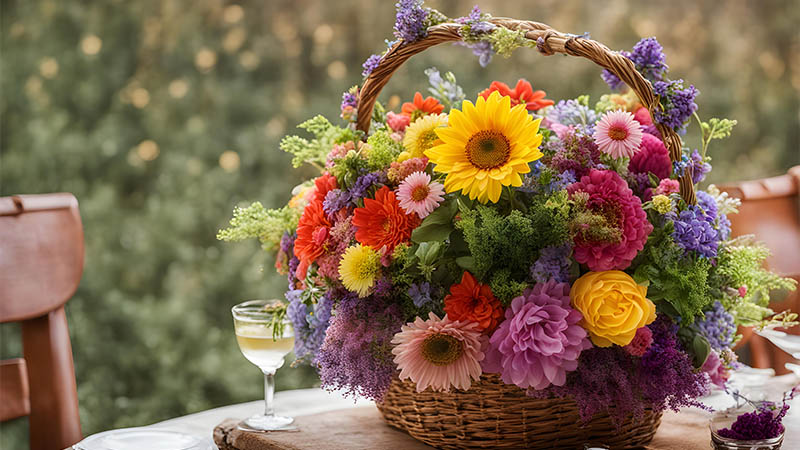
Here are some key steps to plant your flower baskets effectively:
- Choose Your Plants: Select plants that are suitable for hanging baskets and complement each other in terms of color, texture, and growth habit. Trailing plants like petunias, bacopa, or ivy geraniums work well for cascading effects, while upright plants like fuchsias or upright geraniums provide height and structure.
- Prepare the Soil: Fill your flower baskets with the potting soil you gathered earlier. Ensure the soil is loose and well-draining to promote healthy root development. Pre-moisten the soil before planting to help settle it around the roots of your plants.
- Plant Carefully: Carefully remove the plants from their containers and gently loosen the roots. Arrange them in the basket, starting with the tallest plants in the center and trailing plants around the edges. Add more soil around the roots and firm it gently to secure the plants in place.
- Water Thoroughly: After planting, water your flower baskets thoroughly to settle the soil and hydrate the plants. Check the moisture level regularly, especially during hot weather, and water when the top inch of soil feels dry.
Following these steps on how to hang flower baskets ensures your plants establish well and begin to flourish. Proper planting techniques provide a strong foundation for healthy growth and continuous blooming throughout the season, allowing you to enjoy vibrant and colorful displays in your chosen outdoor space.
Read More: How to Make Hanging Flower Baskets?
Hanging Your Flower Baskets
Now that your flower baskets are planted and ready to go, it’s time to learn how to hang flower baskets properly. Hanging them correctly not only ensures they look their best but also provides optimal growing conditions for your plants, allowing them to thrive and bloom beautifully.

Here’s how to hang flower baskets effectively:
- Select Hanging Hooks or Brackets: Choose sturdy hooks or brackets that are appropriate for the weight of your filled flower baskets. Ensure they are securely attached to a stable structure, such as a porch overhang, pergola, or sturdy fence.
- Positioning: Decide on the placement of your flower baskets. Consider the aesthetic appeal and the light requirements of your plants. Hanging baskets that require full sun should be placed in sunny spots, while those that prefer shade should be hung in shaded areas.
- Height Adjustment: Adjust the height of your hanging baskets for visual impact and accessibility. Baskets hung too high may be challenging to water and maintain, while those too low may not showcase their beauty effectively.
- Even Spacing: If hanging multiple baskets, ensure they are evenly spaced for a balanced look. Use a level to make sure the hooks or brackets are installed straight and evenly aligned.
- Careful Handling: Carefully lift each filled flower basket and hang it on the hooks or brackets. Avoid placing stress on the plants or disturbing the soil. Double-check that each basket is securely positioned before letting go.
Learning how to hang flower baskets correctly ensures your plants receive adequate sunlight, proper airflow, and easy access for watering and maintenance. These steps create an inviting and visually appealing display that enhances your outdoor space, bringing joy and color throughout the season.
Caring for Your Hanging Flower Baskets
Caring for your hanging flower baskets is essential to ensure they thrive and continue to beautify your outdoor space throughout the growing season. Knowing how to hang flower baskets is just the beginning—proper care and maintenance are key to vibrant blooms and healthy plants.

Here are some important care tips for your hanging flower baskets:
- Watering: Check your flower baskets regularly, especially during hot weather, and water thoroughly when the top inch of soil feels dry. Hanging baskets can dry out quickly, so consistent moisture is crucial for plant health.
- Deadheading: Remove spent flowers (deadheading) regularly to encourage continuous blooming. Pinch off the dead flowers just above a set of leaves to promote new flower growth.
- Fertilizing: Feed your plants with a balanced fertilizer every few weeks during the growing season to provide essential nutrients. This helps maintain vigorous growth and abundant flowering.
- Pruning: Trim back any leggy growth or overly long stems to encourage bushier growth and maintain a compact shape. Pruning also helps improve airflow around the plants, reducing the risk of diseases.
- Monitoring for Pests and Diseases: Keep an eye out for pests such as aphids or spider mites, which can affect hanging baskets. Address any pest issues promptly to prevent them from spreading to other plants.
- Seasonal Care: Adjust your care routine according to the changing seasons. During cooler weather, you may need to water less frequently, while hot summers may require more frequent watering and shading from intense sun.
By following these care tips on how to hang flower baskets, you’ll help your plants thrive and continue to showcase their beauty. Regular attention to watering, deadheading, fertilizing, and pest management ensures your hanging baskets remain healthy and vibrant, providing you with colorful displays that enhance your outdoor living space.
Troubleshooting Common Issues
When you’re learning how to hang flower baskets, it’s not uncommon to face a few challenges along the way. Identifying and solving these issues quickly can make a big difference in the health and appearance of your plants.
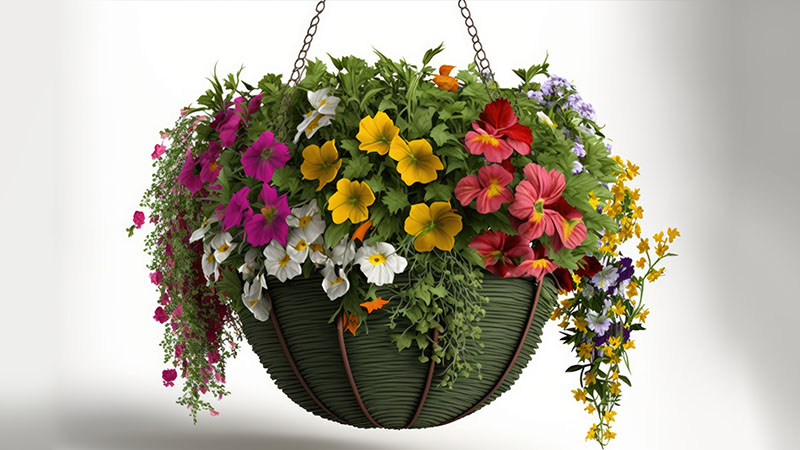
Here are some common problems and helpful tips to address them:
Wilting Plants:
- Cause: Wilting can be due to either overwatering or underwatering. Both situations can stress your plants.
- Solution: Check the soil moisture regularly. If the soil feels dry an inch below the surface, it’s time to water. Conversely, if the soil is constantly soggy, reduce watering frequency. Ensure proper drainage to prevent waterlogging.
Pests and Diseases:
- Cause: Insects like aphids and diseases such as powdery mildew can attack your plants, leading to damage and poor growth.
- Solution: Inspect your baskets regularly for signs of pests and diseases. Use insecticidal soap for pests and fungicides for diseases as needed. Maintaining good air circulation around your baskets can also help prevent these issues.
Uneven Growth:
- Cause: Uneven light exposure often causes one side of your flower basket to grow more vigorously than the other.
- Solution: Rotate your baskets every few days to ensure all sides receive equal sunlight. This simple practice can promote balanced growth and a more attractive appearance.
Nutrient Deficiency:
- Cause: Yellowing leaves or stunted growth might indicate that your plants are not getting enough nutrients.
- Solution: Use a balanced liquid fertilizer every couple of weeks during the growing season. Follow the instructions on the fertilizer packaging to avoid over-fertilization, which can also harm your plants.
Drooping Flowers:
- Cause: Drooping flowers can result from extreme temperatures, both hot and cold.
- Solution: In hot weather, water your baskets more frequently and consider providing some shade during the peak heat of the day. In colder temperatures, bring your baskets indoors or provide protection like frost cloths.
Root Bound Plants:
- Cause: Over time, plants can become root bound in their containers, restricting growth and health.
- Solution: Periodically check the root system of your plants. If you see roots circling the bottom of the basket, it may be time to repot into a larger container or carefully trim the roots to encourage new growth.
Overcrowded Baskets:
- Cause: Planting too many plants in one basket can lead to competition for resources, resulting in weak growth.
- Solution: Space your plants appropriately when initially planting. If overcrowding occurs, thin out some plants to give the remaining ones more room to grow.
Wind Damage:
- Cause: Strong winds can cause damage to hanging flower baskets, breaking stems and leaves.
- Solution: Hang your baskets in a sheltered spot or use windbreaks to protect them from strong gusts.
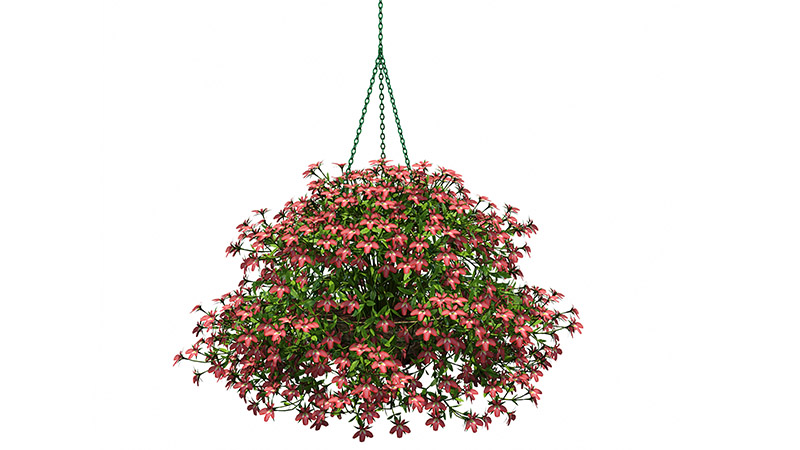
Knowing how to hang flower baskets properly involves more than just the initial setup. It requires ongoing attention and care.
By following these troubleshooting tips, you’ll be well-equipped to handle common issues and ensure your hanging flower baskets remain healthy and vibrant throughout the growing season. Keep an eye on your plants, respond to their needs promptly, and enjoy the beautiful results of your efforts.
Conclusion
Learning how to hang flower baskets is a rewarding endeavor that adds beauty and character to any environment. Whether you’re decorating a porch, balcony, or garden, following these steps ensures your hanging baskets flourish. Remember to choose the right plants, provide proper care, and enjoy the colorful rewards of your efforts. Happy gardening!




